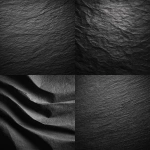Explore the Best AI Image Gallery

From Brushstrokes to Binary: How Wearable Tech is Reshaping the Creative Industry
The realm of creativity has always been a space of innovation, constantly pushing boundaries and exploring new mediums. In recent years, wearable technology has emerged as a powerful force, fundamentally changing how artists, designers, and innovators conceptualize, create, and experience art. From haptic feedback that mimics the feel of traditional tools to augmented reality overlays that transform our perception of the world, wearables are blurring the lines between the physical and digital, opening up a universe of unprecedented creative possibilities.
Unlocking New Dimensions of Artistic Expression
Artists are increasingly incorporating wearables into their workflows, leveraging them to express ideas in novel ways. Imagine a painter utilizing haptic gloves that translate brushstrokes into vibrant colors projected onto a canvas, or a sculptor crafting intricate 3D models guided by real-time feedback from a wearable sensor suite.
- Haptic Feedback: Wearables equipped with sensors and actuators can provide tactile sensations that mimic the experience of working with traditional materials. This allows artists to feel the weight, texture, and resistance of virtual objects, enriching their creative process.
- Augmented Reality (AR): AR overlays, powered by wearable headsets or glasses, can superimpose digital elements onto the physical world, creating immersive and interactive art installations. Artists can transform everyday spaces into dynamic canvases, blurring the boundaries between reality and imagination.
- Motion Tracking: Wearable sensors can capture body movements with high precision, translating them into artistic expressions. Dancers, choreographers, and performance artists can use this data to create mesmerizing visual displays or interactive performances that respond to their every gesture.
Beyond Art: Wearables Empowering Creative Industries
The impact of wearable tech extends far beyond the realm of fine art. Designers, architects, and engineers are also harnessing the power of wearables to innovate and create:
- Fashion Design: Wearable sensors can collect data on body movement, temperature, and even mood, allowing designers to create garments that adapt to the wearers needs and enhance their experience.
- Architecture & Urban Planning: Architects can utilize AR overlays projected through wearable devices to visualize building designs in real-world environments, enabling them to make informed decisions about space utilization and aesthetics.
- Industrial Design: Engineers can use haptic feedback and motion tracking wearables to simulate the interaction with virtual prototypes, refining designs and identifying potential issues before physical production.
Navigating Ethical Considerations
As wearable technology becomes increasingly integrated into creative processes, its crucial to address the ethical implications that arise.
- Data Privacy & Security: Wearables collect vast amounts of personal data, raising concerns about how this information is used, stored, and protected.
- Bias in Algorithms: AI algorithms used in creative applications can perpetuate existing biases if they are trained on biased datasets. Its essential to ensure algorithmic fairness and transparency.
- Accessibility & Inclusivity: Wearable technology should be accessible to all individuals, regardless of their physical abilities or socioeconomic status.
The Future of Creativity: A Wearable Horizon
The convergence of wearable technology and the creative industries is still in its nascent stages. As these technologies continue to evolve, we can expect even more groundbreaking applications that will reshape our world.
- Immersive Creative Experiences: Wearables will enable truly immersive creative experiences, blurring the lines between the physical and digital realms. Imagine attending a concert where the music reacts to your movements or exploring an art installation that adapts to your emotional responses.
- Personalized Creativity:** Wearables will empower individuals to express their creativity in highly personalized ways, tailoring their artistic endeavors to their unique preferences and abilities.
- Collaborative Creation: ** Wearables will facilitate seamless collaboration between artists, designers, and other creatives, regardless of their location. Imagine a team of architects designing a building together in real-time through shared AR experiences.
The future of creativity is undoubtedly intertwined with wearable technology. As we continue to explore the boundless potential of this transformative field, we can anticipate a future where art, design, and innovation converge in exciting and unprecedented ways.

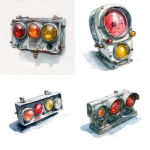
](https://images.ai-img.art/thumbnails/150/3e8c063b4357fc743a3c6e49a3145ee31b2dcecc018c38d2db8f97bf3e3fda3f.webp)

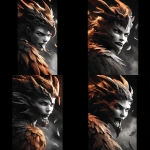

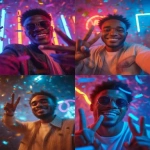

](https://images.ai-img.art/thumbnails/150/1accb5453f2335686b162f0a879c7ce73a18516a33868f214a16bdaf95beeb5a.webp)



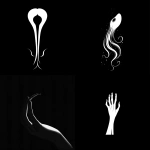
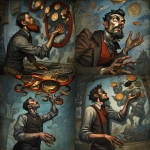


](https://images.ai-img.art/thumbnails/150/8c320ce9aefbbb5b9ec5fd4e1d0fba7388f0fff5b6c2e2f14077cad3008f291d.webp)

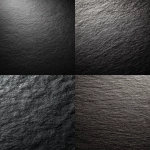

](https://images.ai-img.art/thumbnails/150/1d7b3a908141474d50d90721c394db29c0cb5404d685ae70ea60430c18e905b7.webp)
](https://images.ai-img.art/thumbnails/150/3c5dc62bba83cc9919c20ebfec8430d31e821cef586a2753dd85ef26d77d480a.webp)

